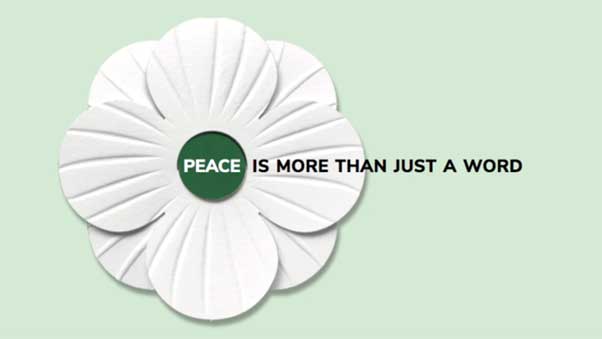
The white poppy has been worn in the run-up to Remembrance Day for ninety years, as a symbol of remembrance and peace.
White poppies are worn every year by thousands of people across the UK and beyond. They were first produced in 1933 in the aftermath of the First World War, by members of the Co-operative Women’s Guild. Many of these women had lost family and friends in the First World War. They wanted to hold on to the key message of Remembrance Day, ‘never again’.
White poppies stand for three things.

Remembrance of all victims of war, including both civilians and members of the armed forces. We remember people of all nationalities. We remember those killed in wars happening now, as well as in the past. We also remember those who are often excluded from the mainstream, such as refugees and victims of colonial conflicts.

Challenging war and militarism, as well as any attempt to glorify or celebrate war. White poppies encourage us to question the way war is normalised and justified. They remind us of the need to resist war and its causes today.

A commitment to peace and to seeking nonviolent solutions to conflict. By drawing attention to the devastating human cost of war, white poppies highlight the urgency of our ongoing struggle for peace.
Watch writer and poet Benjamin Zephaniah explain why he wears a white poppy. “I love wearing my white poppy… We have to remember all victims of war, not just the select few. And we have to work towards a world where there is no war.”
Find out more at https://www.ppu.org.uk/remembrance-white-poppies
(Material and video from Peace Pledge Union)
